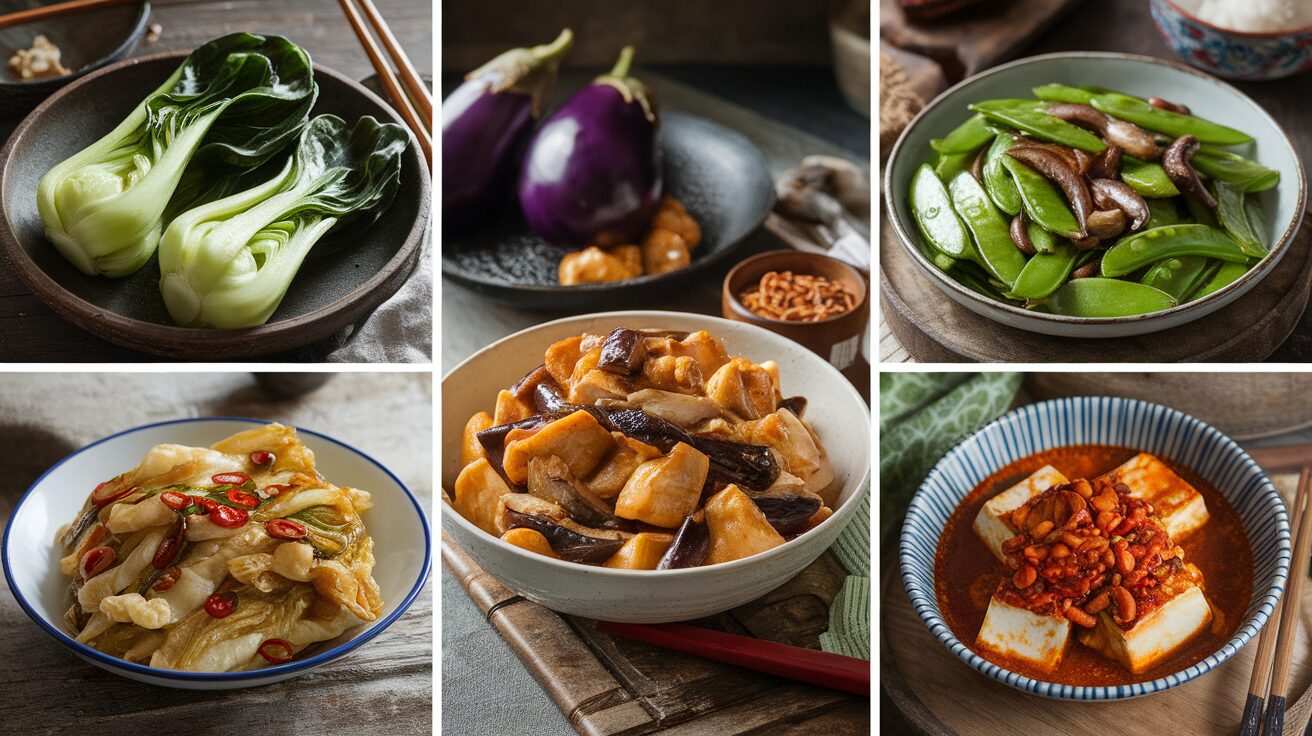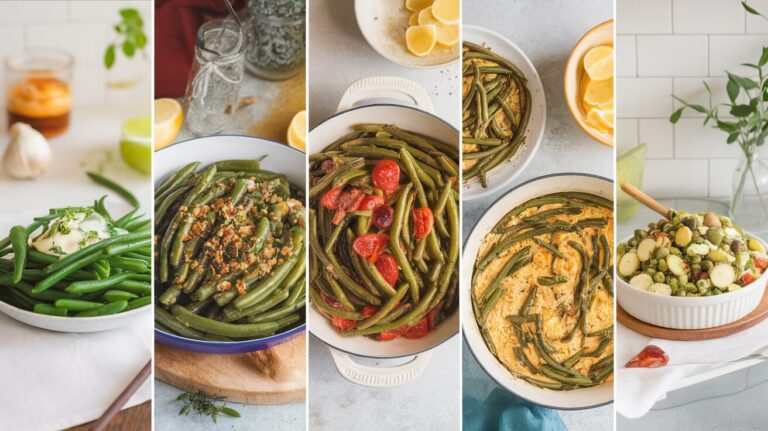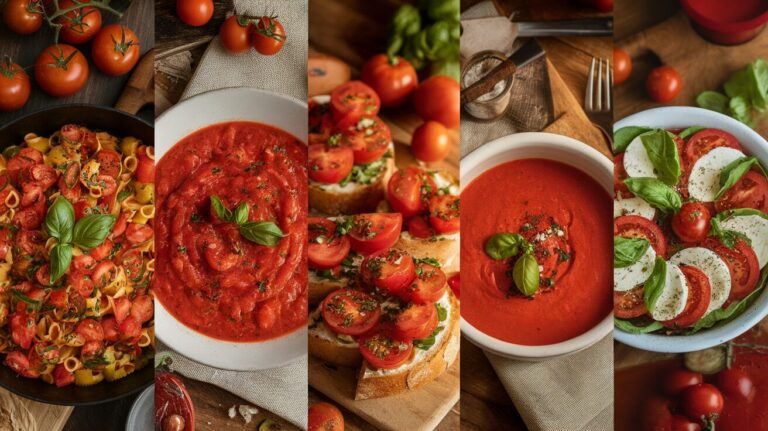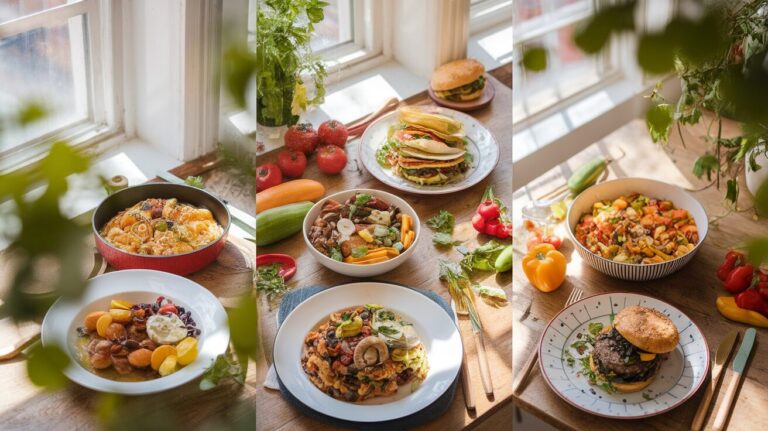5 Chinese Vegetable Recipes You’ll Actually Want to Cook Tonight
Let’s be real most people think “Chinese food” and immediately picture orange chicken drowning in sticky sauce or fried rice that could double as a carb bomb. But here’s the thing: Chinese vegetable recipes are absolute rockstars when it comes to flavor, simplicity, and, yes, making you feel like you’re eating something healthy without crying into a sad salad.
I grew up thinking vegetables were boring. (Looking at you, soggy boiled broccoli.) Then I discovered Chinese cooking techniques, especially stir-frying, and suddenly veggies weren’t a punishment anymore they were the star of the show. So today, I’m sharing 5 Chinese vegetable recipes that I promise you’ll actually want to cook tonight.
Spoiler alert: These recipes are quick, flavorful, and don’t require you to sell your soul for a 20-ingredient shopping list. Ready? Let’s go.
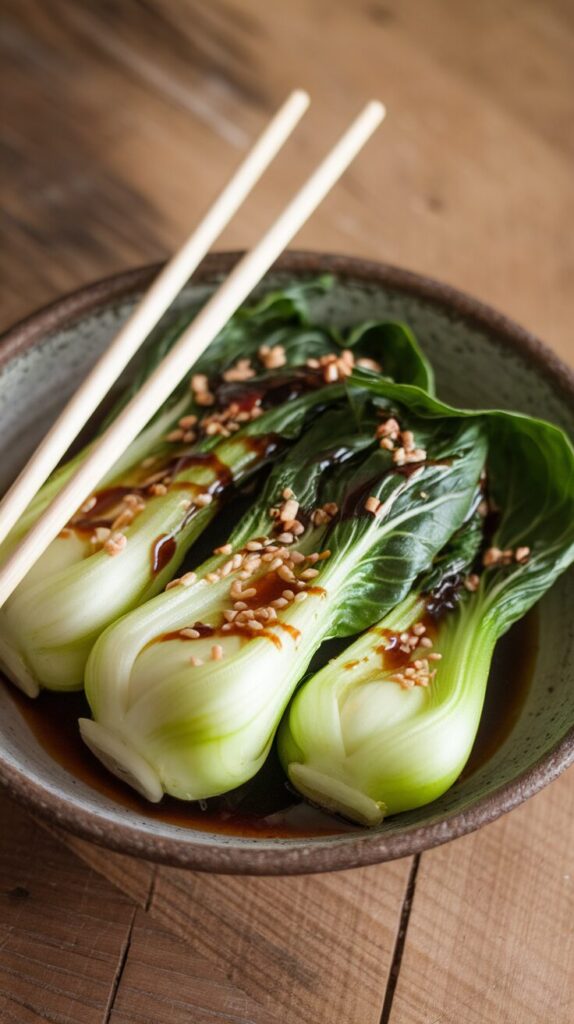
1. Classic Chinese Garlic Bok Choy
If you’ve ever eaten at a Chinese restaurant and thought, “How on earth is their bok choy so flavorful?” this is it. It’s ridiculously simple but feels fancy enough that you could serve it to guests and pretend you’re a pro chef.
Ingredients:
- 1 lb baby bok choy
- 3 cloves garlic, minced
- 2 tbsp vegetable oil
- 1 tbsp soy sauce
- 1 tsp sesame oil
- Pinch of salt
Instructions:
- Wash the bok choy and slice in half lengthwise.
- Heat oil in a wok (or large skillet if you’re wok-less like me sometimes).
- Toss in the garlic, sauté until fragrant (aka don’t burn it or your kitchen will smell tragic).
- Add bok choy, stir-fry for 3–4 minutes until tender-crisp.
- Splash in soy sauce and drizzle sesame oil before serving.
Why it works: Garlic makes bok choy taste like a superstar instead of bland rabbit food. Pair this with rice, and you’ve got yourself a balanced meal in under 10 minutes.
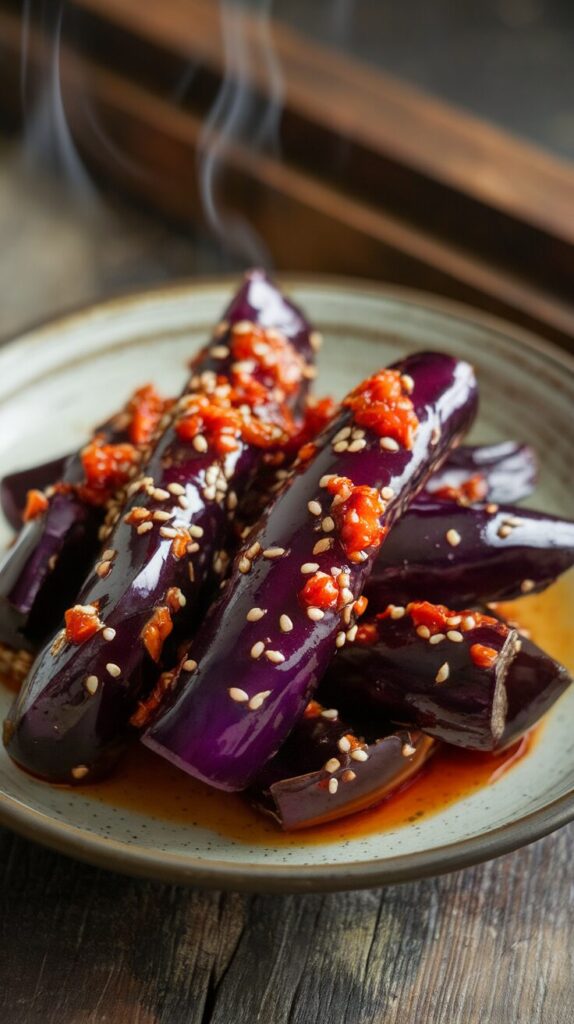
2. Chinese Eggplant with Garlic Sauce (Yu Xiang Qie Zi)
Okay, eggplant can be… divisive. Half of us love it, half of us think it’s a weird purple sponge. But trust me, Chinese-style eggplant will convert the haters. It’s silky, savory, and spicy in the best way possible.
Ingredients:
- 2 medium Chinese eggplants (long and thin, not the giant Italian kind)
- 3 cloves garlic, minced
- 1 tbsp ginger, minced
- 2 tbsp soy sauce
- 1 tbsp rice vinegar
- 1 tbsp chili paste (or chili flakes if you’re brave)
- 1 tsp sugar
- 2 tbsp vegetable oil
Instructions:
- Slice eggplants into strips. Soak in salted water for 10 minutes to reduce bitterness.
- Heat oil in wok. Stir-fry garlic and ginger until fragrant.
- Add eggplant and cook until soft (around 7 minutes).
- Mix soy sauce, vinegar, chili paste, and sugar in a small bowl. Pour into wok.
- Cook 2 more minutes until sauce coats everything.
Why it works: The sauce is tangy, garlicky, spicy, and sweet all at once basically, a party in your mouth. Ever wondered how eggplant could be crave-worthy? This is it.
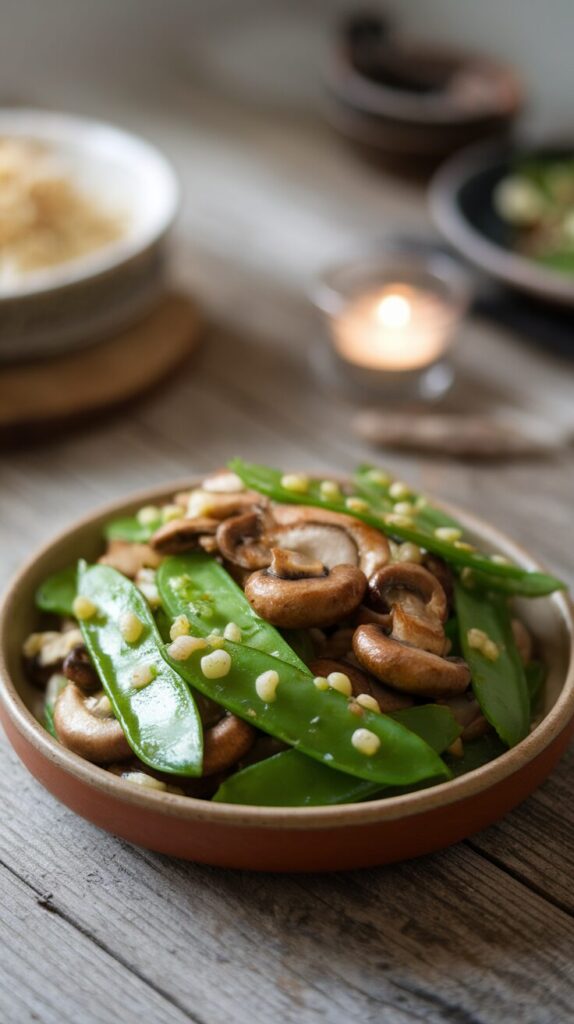
3. Stir-Fried Snow Peas with Mushrooms
This one’s the perfect side dish that doubles as a sneaky way to get in some greens (without anyone whining about it). The crunch of snow peas plus the umami hit from mushrooms = chef’s kiss.
Ingredients:
- 2 cups snow peas
- 1 cup shiitake mushrooms (or button mushrooms if that’s what you have)
- 2 cloves garlic, minced
- 1 tbsp oyster sauce
- 1 tbsp soy sauce
- 2 tbsp vegetable oil
- Pinch of white pepper (optional, but makes you feel fancy)
Instructions:
- Heat oil in a wok. Add garlic and stir for 20 seconds.
- Toss in mushrooms, cook until soft.
- Add snow peas and stir-fry for 2–3 minutes.
- Splash in soy and oyster sauce, stir until everything’s coated.
- Sprinkle with white pepper, serve immediately.
Why it works: The mushrooms soak up the sauce like little flavor sponges, and the snow peas keep things fresh and crunchy. Honestly, it tastes way fancier than the 10 minutes it takes to make.
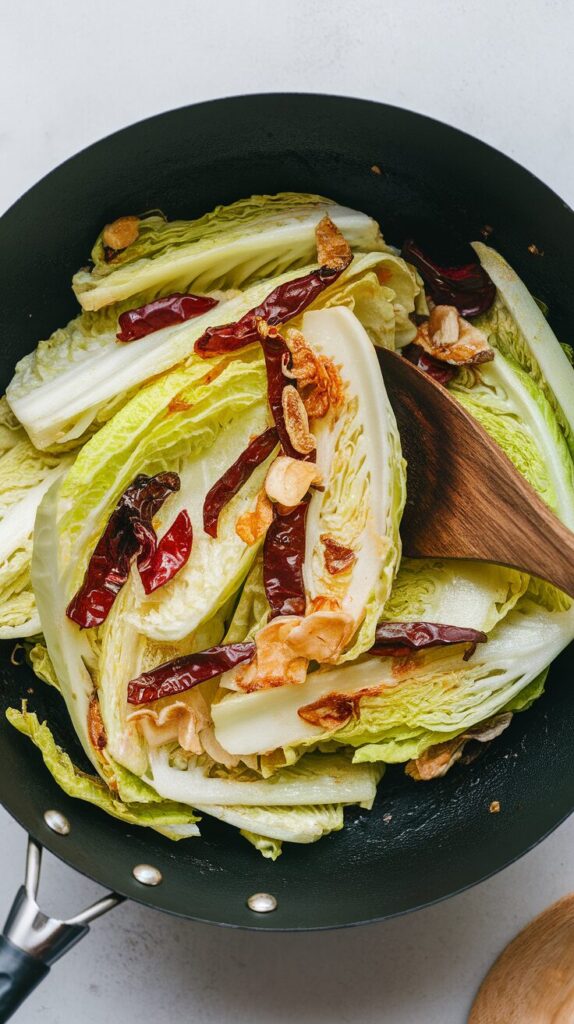
4. Chinese Cabbage Stir-Fry with Chili and Soy
Cabbage usually gets written off as “cheap filler,” but in Chinese cooking, it’s a hero veggie. A quick stir-fry with chili and soy turns humble cabbage into something you’ll actually crave.
Ingredients:
- 1 small Napa cabbage (or regular green cabbage)
- 2 tbsp vegetable oil
- 3 cloves garlic, minced
- 2 dried red chilies (or fresh chili slices)
- 1 tbsp soy sauce
- 1 tsp sugar
- ½ tsp sesame oil
Instructions:
- Chop cabbage into bite-sized pieces.
- Heat oil in wok. Add garlic and chilies, stir until fragrant.
- Toss in cabbage, stir-fry for 5 minutes until wilted but still crunchy.
- Add soy sauce, sugar, and sesame oil. Stir well.
- Serve hot with steamed rice.
Why it works: The chili heat + soy + crunchy cabbage combo is a total flavor bomb. Ever wondered how to make cabbage taste exciting? Yeah, this is how.
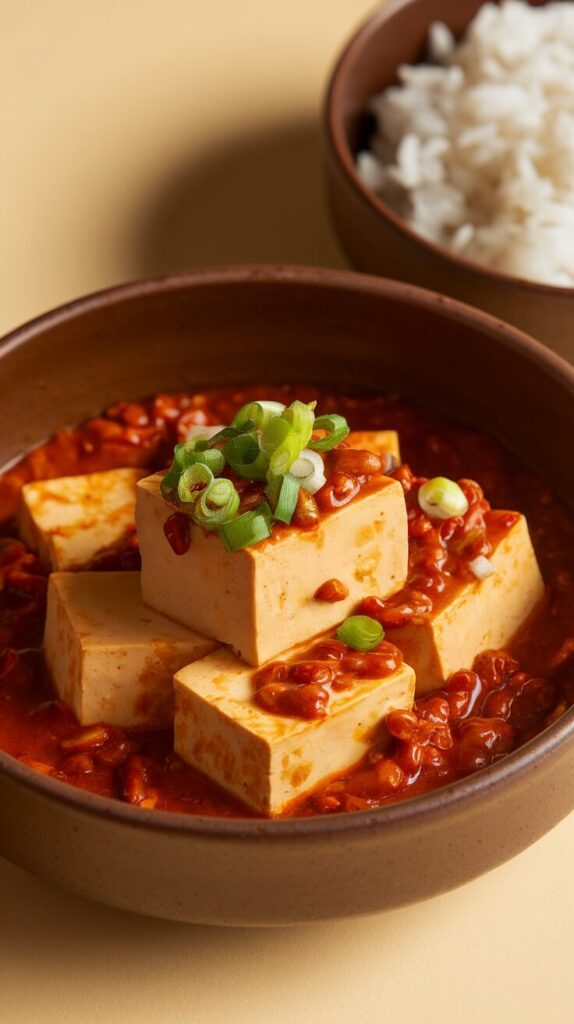
5. Mapo Tofu (Vegetarian Version)
Okay, technically tofu isn’t a vegetable, but it’s in the plant-based squad, so I’m counting it. Plus, Mapo Tofu is legendary. Traditionally made with pork, but this veggie version is just as satisfying creamy tofu cubes swimming in spicy, savory sauce.
Ingredients:
- 1 block medium-firm tofu, cubed
- 2 tbsp vegetable oil
- 2 tbsp chili bean paste (Doubanjiang, if you can find it)
- 2 cloves garlic, minced
- 1 tbsp ginger, minced
- 1 cup vegetable broth
- 1 tbsp soy sauce
- 1 tsp cornstarch mixed with 2 tbsp water (slurry)
- 2 green onions, chopped
Instructions:
- Heat oil in wok. Add chili bean paste, garlic, and ginger stir until fragrant.
- Add tofu cubes and carefully stir (don’t mash them).
- Pour in vegetable broth and soy sauce, simmer for 5 minutes.
- Stir in cornstarch slurry to thicken sauce.
- Garnish with green onions and serve with rice.
Why it works: Silky tofu + spicy, umami-packed sauce = comfort food goals. IMO, it’s the kind of dish that makes you forget meat even exists. 🙂
Tips for Cooking Chinese Veggie Dishes at Home
- High heat is your BFF. Stir-frying works best when your wok or pan is super hot. Otherwise, you’ll end up steaming instead of searing.
- Prep before you cook. Chinese recipes move fast if you’re chopping while the garlic’s burning, good luck.
- Don’t drown in sauce. The veggies should shine, not swim in liquid. Less is more here.
- Experiment with add-ins. Throw in tofu, tempeh, or even noodles if you want to make it a full meal.
Final Thoughts
So there you have it 5 Chinese vegetable recipes that are quick, flavorful, and proof that veggies don’t have to be boring. Whether you’re whipping up bok choy in garlic sauce or diving into a bowl of spicy Mapo Tofu, you’re guaranteed meals that taste amazing without hours in the kitchen.
Next time you’re standing in front of your fridge wondering, “What can I do with these random veggies?”now you’ve got answers. Grab a wok (or just your trusty skillet), crank up the heat, and let the magic happen.
And hey, if anyone tells you vegetables are boring, serve them the eggplant dish and watch them eat their words. Literally. 😉

